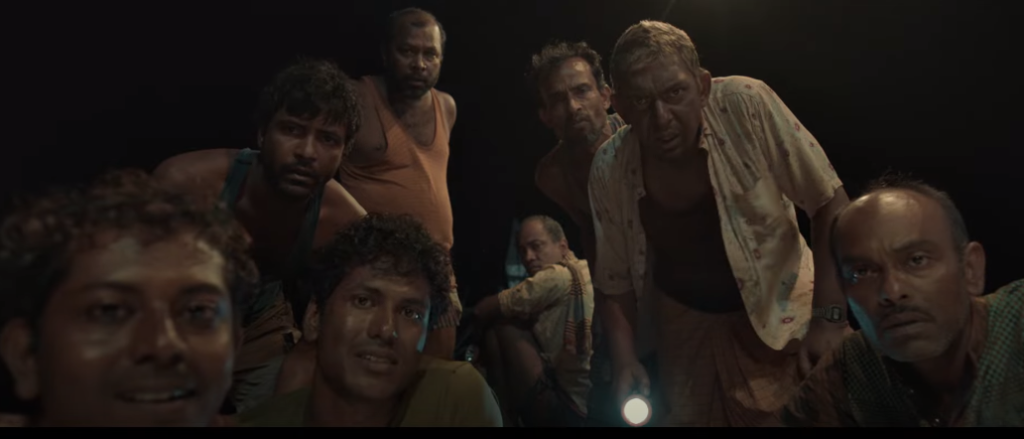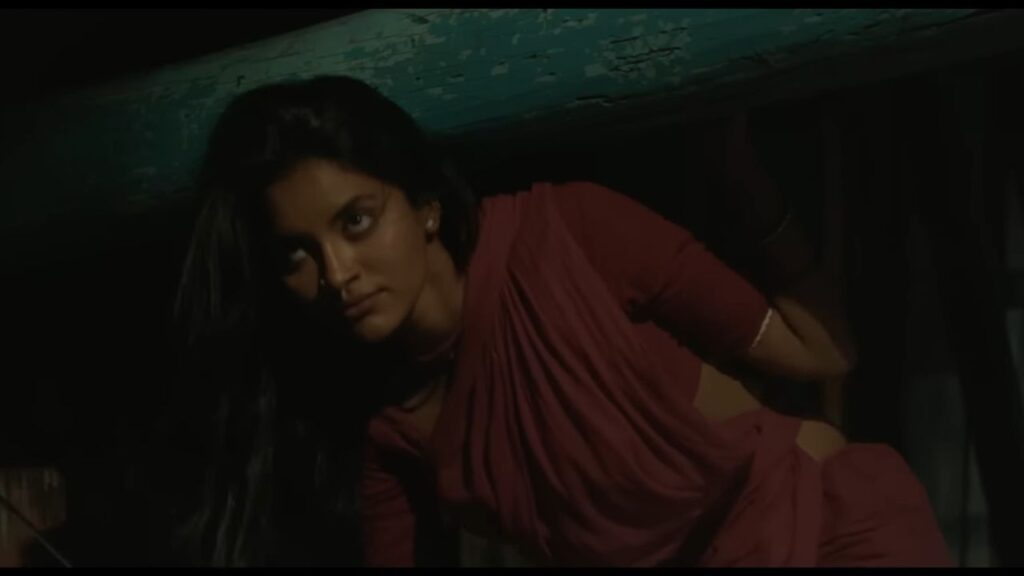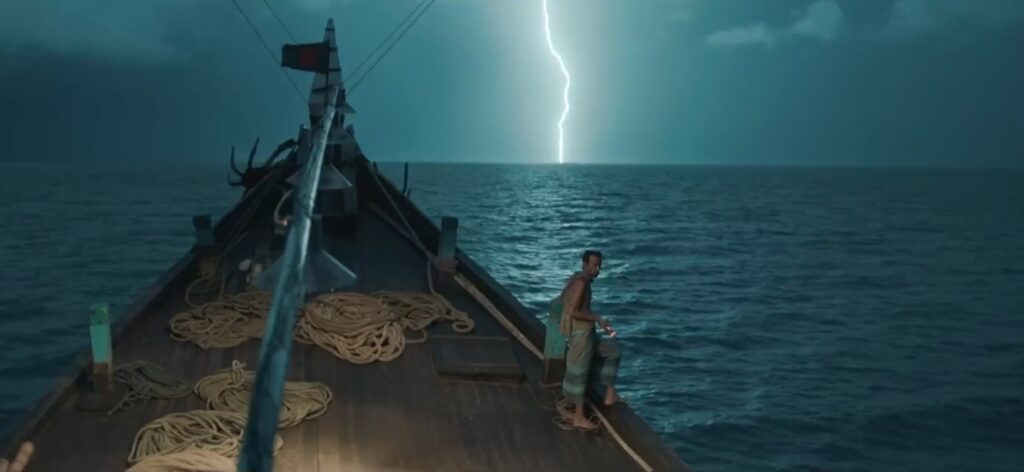By: BIDHAN REBEIRO
“The thought of all human activity makes me laugh.” This utterance of Aragon’s shows very clearly the path Surrealism had to follow from its origins to its politicization.” —Walter Benjamin




German philosopher W. Baltar Benjamin turned to the poet Louis Aragon, one of the leaders of the French Surrealist movement, in his essay ‘Surrealism’ to present the last vestiges of European intellectualism. The quote is from Aragon in his 1924 essay ‘A Wave of Dreams’ where, to clarify the concept of surrealism, he compares it to a broad horizon. The horizon can be seen, but one can never reach it; this experience is our reality. The mind knows that the horizon is not real, but it can see that the human mind can exist by combining the real and the unreal. This experience is extended through special processes into other spheres that become surreal. On the horizon of this surreality, faith-disbelief, magic, fantasy, dreams, madness, drunkenness, etc., are filled, and the human mind then moves to the line between reality and unreality. The movement of his thoughts becomes a two-door house. The feats of human civilization—it is not superfluous to remember that the First World War ended a few years before Aragon wrote this essay—are astounding. When man’s inhuman, demonic violence is placed next to humanity, it feels surreal. However, in the essay mentioned above, Benjamin and others try to show how surrealism was used in bourgeois versus revolutionary politics in the early twentieth century.
1.
Mejbaur Rahman Sumon’s ‘Hawa’ (2022) is a surrealist film; although it is called a ‘modern fairy tale’, the director himself has said so in various interviews, but the film struck me as something more than reality. At the beginning of the film, the audience gets a hint of what will happen.
The sea itself is a mysterious world to man, as much of it is still undiscovered, so when Nayantara, the fishing vessel of the ‘Hawa’, sets sail, he actually enters a world of
mystery. The captain of the eight on board is the midshipman, his mate Iza, and the engine room engineer Iba’s role as a protester. Other characters include Naghu, Urkesh, Parkesh etc.
After the ship arrives in the middle of the sea, a lot of fish are caught in the net, at midnight, the boatman and his companion Iza try to sell fish by stealing it, Iba protest immediately. If the fish is sold instead of given to the owner, it has to be given an equal share.
But Iba engine mechanic, he does not catch fish, so fish has no right, that is what the boatman wants justice means he does not see everyone equally. One day on a stormy night, a woman came up in the net; her name was Gulti.
While it is not clear whether she is a mermaid, a messenger or an avatar of Goddess Manasa, it is clear that Gulti is not an ordinary person, but what is interesting is that director Suman has managed to transform this ambiguity into a mystic. It is also clear from Gulti’s makeup, the shape of a fish on her earrings, the impression of the Bedeni in the style of wearing a sari, and the colour of the sari is reddish khaeri type. Mansa Devi is seen wearing a coloured saree. The lipstick on the slingshot’s lips may be questioned, but don’t forget that the slingshot is not human, it’s nature is to get close and then attack out of mind. Those who have seen Robert Eggers’ ‘The Light House (2019), know-how mermaid-like illusions catch sailors’ eyes. They first become appealing to the sailor, the extreme attraction of sex in the monotonous waters devoid of female companionship; then, in due course, they shape themselves.
Gulti tells Iba that Mansa Devi has sent her to take revenge. Chan Majhi was once a Chan Dakat (Robber), this Dakat took Gulti’s father’s life. Gulti is incorporeal here, she can be a fish, and can also take the form of a snake. Everyone, especially Chan Majhi, was shocked to see the slingshot like a ghost. Echoing the words of Marx and Engels, just as European rulers, elites, clerics, etc. were afraid of socialism like seeing a ghost, the sailor wanted to be frightened by such a trap; he and those people who saw the ghosts are the same and unique rulers on the ship.
Interestingly, the socialist ideology, which is a ghost or incorporeal to the rulers, is what we see in Gulti and his friendship with the revolutionary Iba. When Chan Majhi tries to extort Gulti, Gulti apparently takes a stand against him and begins to unfold its form.
The ship lost its net and anchor and broke up in the middle of the sea. Of course, the blame falls on Gulati because women have been prohibited from boarding the ship. But there is no confidence in that belief. Iba continues to work in Gulati’s defence with honour from the beginning. They are allied. One day after it falls, the owner wants to kill Iba. From that moment, Gulti disappeared, after which he started killing the ship’s sailors one by one. In the end, the snake bites Chan Majhi.
Gulti loved revolutionary Iba, ‘Hawa’ ends with the melody of joy and pain that Gulti takes revenge on his dead body. Even if the revolutionary dies, the ideology does not die – this is the message that ‘Hawa’ wants to spread. A question may arise, why did Gulti kill others on the ship while killing Chan Mia? One answer could be because they all became Chan Mia’s allies, or another answer could be the wind of revolution uprooted many innocent trees, just a victim of circumstance.
2.
Chand Saudagar can be found in common with Chan Mia, which is not unusual because the director has tried to make a surreal film with a modern interpretation of the fairy tale. There is a strong resemblance to Mansa Devi’s conflict with Lord Shiva’s devotee Chand Saudagar in myth.
Chand Saudagar of myth is also rich, he is the favourite of the Aryan god Shiva. And Manasa Devi is the marginalised goddess among Aryans. The conflict between Arya and Anarya is embodied in the fight between Chand Saudagar and Mansa Devi. That struggle is finally brought to reality through the use of metaphors in this film.
Who is the revolutionary character Ibrahim aka Iba? In the scriptures, it can be seen that Ibrahim or Abraham is a person who is willing to sacrifice the most beloved thing for the sake of the Almighty. For some, the creator is absolute; for some, the ideal is his absolute; for some, love becomes absolute. In ‘Hawa’, Iba is apparently ready to sacrifice his dearest, his life, for the sake of love; metaphorically, this love is also ideal. Chan Mia, another metaphor for bourgeois power, is the ideal of rising from the depths of exploitation and deprivation.
In this fairy tale film, the ship itself is a unique metaphor, this Nayantara feels like a state. It can be seen that the victim of discrimination, the deprived Iba lives in the lower room of the ship, which is the engine room.
This room is the central power of the whole ship, but neglecting and depriving that power, Chan Mia is sitting on the roof of the ship and starts the journey as the guardian of everyone. In him, we discover a man of robbers, exploiters, murderers, greedy and ridiculous.
Who will deny that this character is not the embodiment of the bourgeois class of the state? On the other hand, Iza became a metaphor for the elite group, the allied group of the rulers. Ija means the sum of a deposit. Iza keeps track of the ruler’s expenses as he is his private secretary. This class hovers above the two lower classes, with the fishermen and cooks in between representing the middle class, they are largely passive, bewildered by the suddenness of events.
Just as there is no language without metaphor, surrealism is also impossible to compose without metaphor. If the director calls the film a modern fairy tale, there is no problem. The surreal picture he creates based on this fairy tale ultimately becomes, in my opinion, highly political. This film is multi-layered if it has a fairy tale on one level, metaphorical surrealism on another, and political awareness on the third level.
All of the elements of surrealism we discussed at the beginning are present in this film: belief-disbelief, magic, imagination, dreams, madness, and drunkenness. Analyzing the plot and characters of the film will reveal these elements. For example, Iba’s wavering belief and disbelief about what is happening on the ship, the magic of the slingshot, the wonder of the Urkesh-Perkesh, the fishermen’s dreams of catching a lot of fish, when many ships are together in one night, the madness and drunkenness for wine and women—all are in store in this film.
The song ‘Sadasada-Kalakala’ became very popular in the film ‘Hawa’, used as a popular element. Although the song is used in the middle of the ocean, it was born in the Shahbagh area. In this case, the director would have done better if he had shown a little more discretion. There are actually many songs of Majhimallas, the number of people working on them is not less in Bangladesh. They could have been approached, but the way the song has been applied to the film has been appropriate.
Many scenes of the film are memorable. The bird’s-eye view of the ship floating alone on the vast rocks is as thrilling as it is interesting as the anchor and the camera accompany the viewer as they dive into the deep waters. In another eye-catching scene, with the camera positioned inside a cabin on the ship, pulled into a triangular shot, and Gulati looking out through the cabin door, this depth of field is impressive. Such use of cinematic language was not seen in Bengali films for a long time, I was reminded of ‘Citizen Kane’ (1941). The audience will remember the cinematography of the film ‘Hawa’ for a long time, but let me tell you why the cinematography of this film should be praised.
Operating the camera out to sea is challenging, with no chance of keeping the tripod on solid ground, but the frame cut out by the waves is great, and getting the camera right on the ship’s deck, in a small cabin, or in the tight confines of an engine room is a real challenge. But still, every frame reminds us that a skilled artist handles the camera, Kamrul Hasan Khosru’s pains have been successful.
If we talk about acting, then everyone has acted well. But Nafiza Tushi, who plays Gulti, had a chance to do better. Chanchal Chowdhury, as Chan Mia, felt like he was acting in a place where Chan Mia was burning his pet bird. The rest he handled well and seemed like Chan Mia.
But if these little things are left out, I would say ‘Hawa’ is the latest feather added to the crown of Bangladesh’s thoughtful films, and such an insightful film will enrich the history of Bangladeshi films. Last but not least, there is a word in the Hawa, ‘Hawa’ is a copy of the Korean film ‘Sea Fog’ (2014) directed by Sang Bo Sim.
I just want to say that if there is a sea, a ship and a girl, it does not make it fake. It is important to consider whether the original livelihood is the same. The Korean film is about human trafficking, and the Bangladeshi film is a full-fledged political narrative based on the wings of fairy tales and surrealism.

